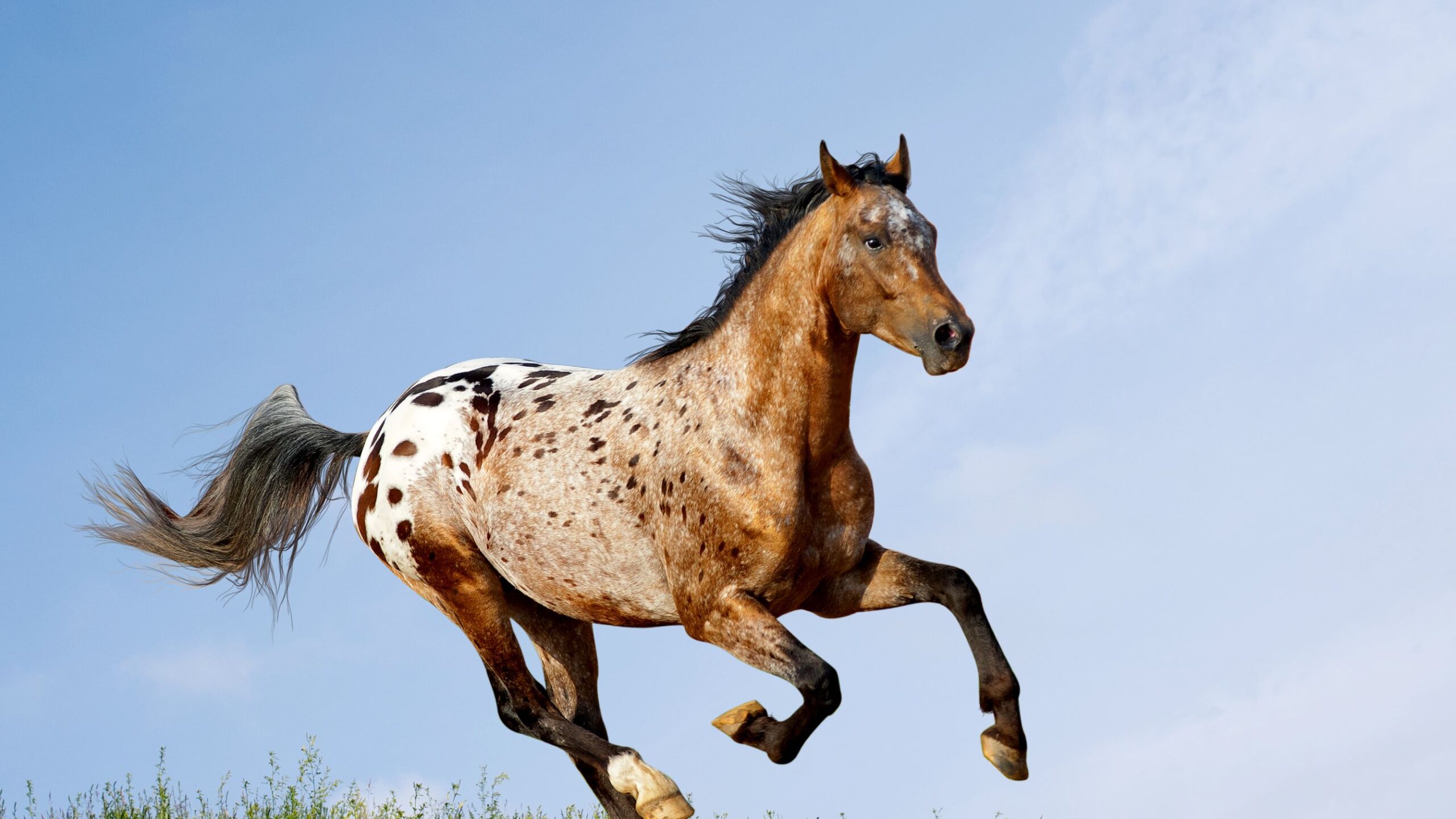
The breed goes back to the late seventeenth century, to the northwestern corner of North America and specifically to the large area that covered what is now part of the states of Oregon, Washington, Idaho, and Montana. This was the land inhabited by the Nez Percé American Indians, and it is to their forward-thinking horsemanship and breeding practices that the Appaloosa owes its success.
Though the Nez Percé developed this spotted breed, the history of spotted horses is a long one, with images of spotted horses appearing in prehistoric European cave paintings from around 17,000 B.C.E. Spotted horses-in particular the Austrian Noriker and the Danish Knabstrup – were extremely popular in Europe and were in great demand from the sixteenth century to perform in the increasingly popular Riding Schools. Many of the hallowed Spanish horses, too, including the revered Andalusian, once exhibited spotted coat colorings.
Horses introduced to the Americas by the Spanish conquistadores carried the powerful spotted coat gene, which spread up into North America as the Spanish continued their explorations. The Shoshone tribe from southern Idaho became great horse traders, and it was largely from the Shoshone that the Nez Percé, whose territory was farther north and west, acquired their stock of horses. The Nez Percé’s land, with its fertile plains and sheltered areas, was highly suitable for raising horses, and the tribe quickly established a substantial breeding stock. Unlike many of the American Indian tribes, the Nez Percé set about implementing breeding programs to specifically improve their horses. Only the best horses were kept as stallions, whereas those of inferior quality were gelded. The tribe kept the best of its breeding stock and got rid of the poorer horses through trading with other tribes. The numbers of their horses rose rapidly, and the Nez Percé became an affluent tribe based on their huge stock of horses. In the early 1800s, the American explorer Meriwether Lewis (1774-1809) described the Nez Percé’s horses as “of an excellent race; they are elegantly formed, active, and durable.”
Color was an important consideration for the Nez Percé, not just for ornamentation and decorative purposes but also for camouflage. However, their primary concern when breeding was to develop an all-around horse of great stamina, speed, and toughness, and one that was able to survive on sparse rations. Their horses became renowned for these qualities and were as capable of pulling a plow as they were of covering huge distances at speed with a rider. The most prized of their horses were used during warring campaigns and were swift, agile, and intelligent, and the most revered of these were the spotted ones.
The spotted horses belonging to the Nez Percé were described as Palouse horses by white settlers, who took the name from the Palouse River that ran through the Nez Percé territory. Later the horse became known as “a Palouse,” then as an Appalousey. The name Appaloosa was not given to the breed until 1938 with the formation of the Appaloosa Horse Club, established to preserve the breed. Some fifty years before this, however, the plucky, spotted breed was all but wiped out during the Nez Percé War fought between the American Indians and the U.S. government in 1877. The Nez Percé managed to outwit and outrun the U.S. cavalry for more than three months and across 1,300 miles (2,092 km) of treacherous terrain, solely because of the fortitude and endurance of their Appaloosa horses. The Nez Percé were undefeated in battle but eventually surrendered to prevent further hardships to the people trying to weather the frigid Montana winter. The conditions of their surrender stated that they be allowed to return to their lands in the spring with their horses, but instead they were sent to North Dakota and many of their beloved and prized animals slaughtered. Some escaped, and others were later rounded up by ranchers and used or sold.
After this, some of the horses that had survived were quickly dispersed at auction and acquired by a few private individuals and ranchers who recognized their innate qualities and began to breed them. In 1937, the magazine Western Horseman published an article on the Appaloosa written by Francis Haines, sparking public interest in the breed. The following year, Claude Thompson, a breeder of the spotted horses, joined with several others and established the Appaloosa Horse Club to preserve and promote the horses. By 1947, there were two hundred registered horses and a hundred members. Just three decades later, under the leadership of George Hatley, the club had a phenomenal figure of more than 300,000 horses registered, making it the third-largest light-horse breed registry. During this regeneration of the Appaloosa there was some introduction of Arabian blood and considerable influence from the Quarter Horse, which can be seen in the muscular frame of the modern Appaloosa.
In 1994 the Nez Percé tribe now based in Idaho began a breeding program to develop the Nez Percé horse. The aim of this program, which is based on breeding old Appaloosa stock with Akhal Teke stallions, is to produce an elegant, tough, versatile, and agile horse that is equal in its qualities to the original horses of the Nez Percé. Some, though not all, of these horses exhibit the spotted coat pattern of their Appaloosa heritage, though they generally adhere to the sleeker, finer frame of the Akhal Teke. Today, Appaloosa is considered as one of the most beautiful horse breeds in the world!




